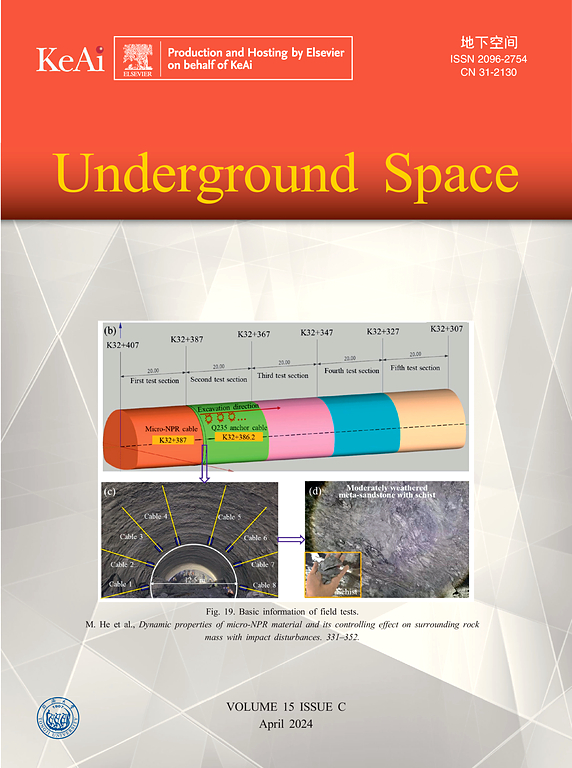城市地下公路隧道设施全生命周期碳排放评价模型
IF 8.3
1区 工程技术
Q1 ENGINEERING, CIVIL
引用次数: 0
摘要
人为温室气体排放是气候扰动的主要催化剂。准确评估这些排放对实现节能减排目标至关重要。城市地下公路隧道设施成为缓解交通拥堵和推进节能减排工作的有希望的资源。尽管如此,量化其碳排放量的方法仍然很少。本研究探索地下公路隧道设施生命周期模式下的碳足迹评估领域。根据城市地下公路隧道设施的特点、功能和设计复杂性,对物理边界和范围进行了精心校准。随后,建立了一个能够封装整个生命周期碳排放特征的碳排放计算模型。同时,建立了各种碳排放活动的详细排放因子数据库。利用从具体项目案例中获得的见解,阐明了城市地下公路隧道设施在总体和单个阶段的总体碳排放概况。与此同时,针对不同阶段碳排放的特殊属性,提供了旨在节能和减排的定制建议和策略。本文章由计算机程序翻译,如有差异,请以英文原文为准。
A lifecycle carbon emission evaluation model for urban underground highway tunnel facilities
Anthropogenic greenhouse gas emissions stand as the primary catalyst of climate perturbations. A precise evaluation of these emissions holds paramount importance in realizing energy conservation and emission reduction goals. Urban underground highway tunnel facilities emerge as a promising recourse for ameliorating traffic congestion and advancing energy conservation and emission mitigation endeavours. Nonetheless, the methodologies for quantifying its carbon emissions remain scant. This study ventures into the realm of carbon footprint appraisal within the lifecycle paradigm of underground highway tunnel facilities. Tailored to the characteristics, functionalities, and design intricacies of urban underground highway tunnel facilities, the physical boundaries and scopes are meticulously calibrated. Subsequently, a carbon emission computational model adept at encapsulating the emission characteristics throughout the entire lifecycle is formulated. Meanwhile, a detailed database is established for emission factors of various carbon emission activities. Leveraging insights garnered from a specific project case, the overarching carbon emission profiles of the urban underground highway tunnel facility, both in aggregate and individual stages, are elucidated. Concomitantly, bespoke recommendations and strategies aimed at energy preservation and emission abatement are proffered, attuned to the idiosyncratic attributes of carbon emissions across distinct stages.
求助全文
通过发布文献求助,成功后即可免费获取论文全文。
去求助
来源期刊

Underground Space
ENGINEERING, CIVIL-
CiteScore
10.20
自引率
14.10%
发文量
71
审稿时长
63 days
期刊介绍:
Underground Space is an open access international journal without article processing charges (APC) committed to serving as a scientific forum for researchers and practitioners in the field of underground engineering. The journal welcomes manuscripts that deal with original theories, methods, technologies, and important applications throughout the life-cycle of underground projects, including planning, design, operation and maintenance, disaster prevention, and demolition. The journal is particularly interested in manuscripts related to the latest development of smart underground engineering from the perspectives of resilience, resources saving, environmental friendliness, humanity, and artificial intelligence. The manuscripts are expected to have significant innovation and potential impact in the field of underground engineering, and should have clear association with or application in underground projects.
 求助内容:
求助内容: 应助结果提醒方式:
应助结果提醒方式:


